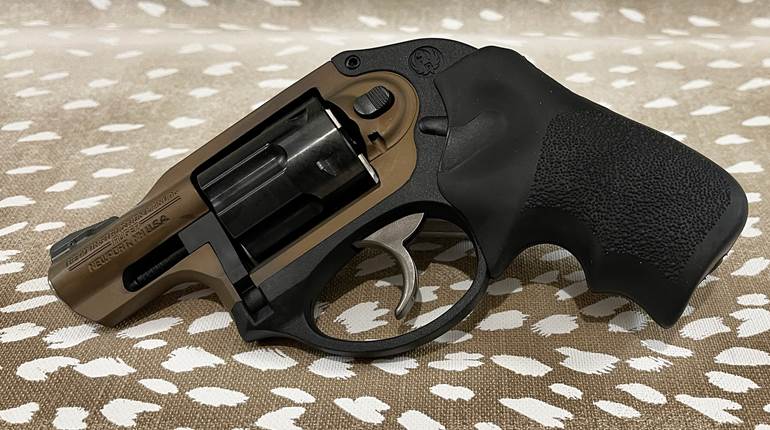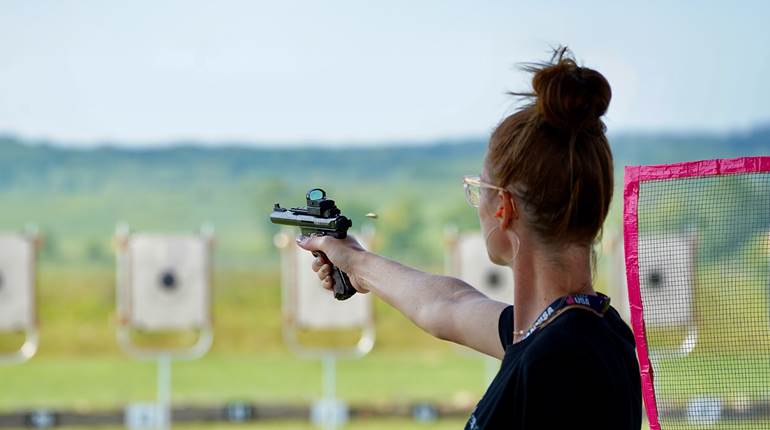
At the end of 2017 Ruger introduced a lot of new models, and a few weeks later I noticed one of them, the little EC9s, in my local gun shop. The EC9s is a “base model” treatment that economizes Ruger’s successful LC9 single stack 9 mm, and is selling for as little as $220 in my area. That is an incredibly economical price for a purpose-built CCW piece from a long-standing, reputable American manufacturer, backed by a solid warranty.

The EC9s is a striker-fired subcompact pistol that carries 7+1 rounds of 9 mm Luger. It is a direct competitor to the Smith & Wesson Shield and the Glock 43, two of the market leaders in the single stack CCW class. Each of the three pistols has slightly different dimensions but are essentially comparable in overall size. So much so that the EC9s actually fit well into several holsters that were molded for either the Shield or the G43. (This is by way of comparison; the EC9 didn't work universally in the other guns’ scabbards and there are plenty of holsters available specifically built for the Ruger.) 
The most noticeable difference between the EC9s and the still-available LC9s is that the sights on the EC9s are integral with the slide rather than the dovetailed (and replaceable) units on the LC9. There are some cosmetic differences that yield simpler, and less expensive, machine operations and the EC9 comes with a single magazine.
The integral sights are low profile with serrated rear faces. The sight picture it provides is quite good with a relatively wide notch that makes the front easy to pick up. The sights were well-regulated for me, striking just a little high within 7 yards and sighted for a six o'clock hold at 25 yards. Having seen the front sights shear off of two different economy pistols from other makers recently I am actually pleased to see the rugged fixed sights on this model.
The trigger has a long, lightly weighted take-up followed by a striker release that “rolls” smoothly over another 1/3” movement. The long trigger movement is reminiscent of a very light and smooth double action, although the total pull measured just under 5 lbs. of pressure. I found it very useable and thought that it helped the shooter to resist the tendency to snatch the trigger through the break that one sees with some “crunchy” striker-fired triggers.
The EC9s was capable of making nice consistent groups from the bench. At 15 yards it put five of Wilson Combat’s signature match loads into as little as an inch and a quarter, and an inch and a half on average. Groups at an optimistic 25 yards still tended to be in the 2.5” to 3” range with match or quality defensive ammo.
Once I was satisfied that the little Ruger would technically shoot, I was more concerned with how it performed. I ran it across a wide variety of drills but a couple of highlights are illustrative.

At five yards I fired the EC9s across the 5-yard Roundup, consisting of four strings fire, each with a 2.5-second time limit on a B8 bullseye. The strings consist of one shot from the holster, four shots from the ready, three from strong hand only, and two final shots fired with the support hand only. The Ruger posted a high of 99 and averaged 97 with Black Hills FMJ. This was better than I anticipated from experience with other subcompacts and is about identical to what I deliver with some stock double stack service pistols that are considerably larger than the EC9S.
At 10 yards I ran the Ruger through the plate rack using an MGM “Plate Rack in a bucket” that sets up using brackets on 2x4s. The timer measured from the buzzer to the sixth steel plate being hit, with all strings beginning from the ready position. Using Super Vel’s 147-gr. Hush Puppy subsonics I was able to ring all six plates down to 3.0 seconds flat and about 3.16 on average. This is just a little faster than where my times tend to be with some midsize .40-cal. semi-automatics and the tempo was much faster than I can run with a snub barreled alloy .38 of similar weight to the EC9. 
Since the EC9 was shooting much better than I expected for a nearly pocket-sized semi-auto, I backed off to 20 yards and ran the plate rack from the holster. It was pretty straightforward to hit all six plates in under 10 seconds. This is actually quite good with a lightweight pistol of the Ruger’s size.
On one range trip I was finishing up and looked downrange to a steel silhouette in the distance. The light was hitting the target very favorably, inviting an attempt. I ranged the target with a Leupold laser rangefinder and moved to exactly 100 yards. I had some 125 gr. Hornady Steel Match that I knew exactly where they hit at 25 yards which allowed me to make an educated guess as to hold on the steel. It took a couple of shots to confirm the correct point of aim but then I was rewarded with a dull ding drifting up range. The next three shots were also hits (see video). The group for all four hits was about an 8” cluster with three in a fist-sized spread. Having found the sweet spot, the little hideout auto put 11 of the next 12 rounds onto the steel.
I found the Ruger easy to manipulate. The slide was subjectively more easy and positive to retract than some of its competitors, which can be stiff and/or hard to get a good grasp. The slide serrations on the EC9 provide good traction and the slide stop is very well located for most shooters, allowing them to easily lock the little 9 to the rear. Most shooters will find the Ruger easy to administratively handle, load, etc with confidence despite its hideaway size.
There was definitely recoil involved, as one would expect with a 17 oz. 9 mm, but I found the shape of the grip and molded in checkering to be effective in maintaining a firing grasp and quickly recovering from recoil. In multiple shot strings the pistol would begin working its way loose by the fourth or fifth shot and require slight readjustment.
When my purchase on the semi-automatic loosened in recoil, the convenient placement of the slide stop would occasionally meet my rising thumb and cause the slide to lock back prematurely. This was possible to avoid by conscious hand placement and a firm grasp. I suspect that this particular issue may be more pronounced with my large hands than for the average shooter. Still, I would prefer an option to have an internal slide lock as with the LCP, but I recognize that most of the market will like the pistol just as it is.
I fired a little under 500 rounds through my sample and had no stoppages other than the aforementioned five to six premature slide locks caused by a loose grip. It fed and cycled JHPs from 90-gr. +P Super Vels to 147-gr. Federal HSTs as well as Black Hills’ fluted copper Honey Badger solids.
For a long time there was a noticeable “hole” in the market around the $200 mark. There was the usual assortment of low-end blowback .25 and .380 semi-autos, the odd double derringer or abused surplus Soviet bloc semi-automatic at one hundred something and then a gap that skipped all the way to the $350 used section for main brand semi-automatics or J-frames. Advances in manufacturing coupled with a cut-throat competitive market have adjusted prices downward in most categories, with some rebate offers occasionally bringing models below $300. However, few could have predicted shooters having a carry worthy, major name 9 mm semi-auto readily available for $220.
I suspect that the EC9s will be a very popular “first gun" for many CCW holders and also quite popular with those who primarily carry a larger pistol but are lured by the price point to pick up the single stack for occasional and/or back up use.





































